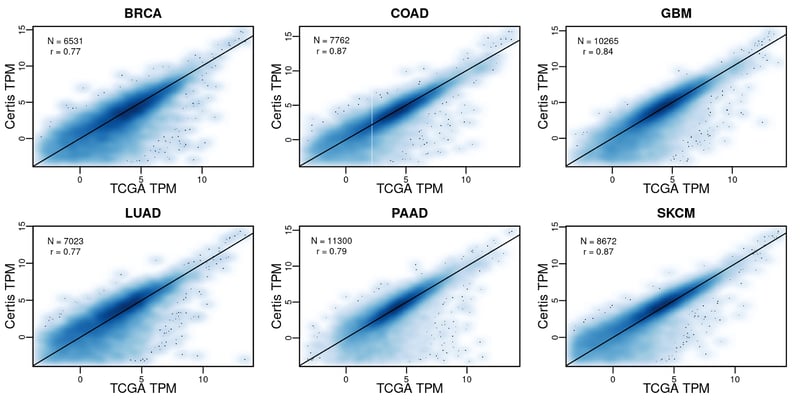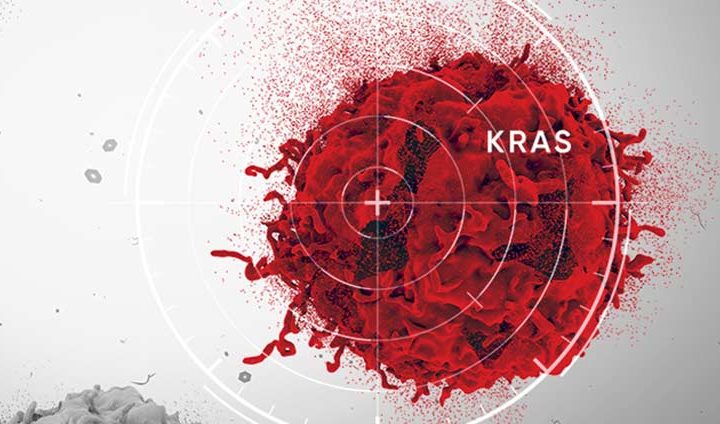New Certis Whitepaper: Bringing Certainty to PDX Model Characterization
EXECUTIVE SUMMARY
Patient-derived xenograft (PDX) models are indispensable for translational cancer research. However, public and private PDX tumor banks may lack standard quality controls, which may lead to genomic and transcriptomic characterization inaccuracies, and the potential to reduce efficiencies with which oncology researchers and clinicians can mimic tumor pharmacology, growth, metastasis, resistance and relapse. To demonstrate the quality of the Certis tumor bank and to ensure the data in the BarneyOI Cancer Model DatabaseTM accurately represents the growing collection of its PDX models, Certis analyzed mutation and transcriptomic profiles and compared gene expression results to both disease-free tissue and cancer patient profiles.
FIGURE 1.B. certis pdx vs. tcga: comparison of certis pdx gene expression data against the cancer genome atlas (tcga). certis pdx gene expression shows high positive correlation to similar cancer types from tcga (Pearson's correlation average, r=0.82).

KEY TAKEAWAYS
-
Gene expression from the Certis PDX tumor models is highly concordant with primary cancer samples in the Cancer Genome Atlas (TCGA), validating them as high-quality, valuable tools for preclinical research.
-
Certis’ PDX models exhibit dysregulation in typical cancer pathways compared to disease-free tissue (i.e., normal controls).
-
Common cancer driver mutations in TP53, EGFR, PTEN, and KRAS are found at a high frequency across tumor types in Certis’ PDX models.
-
Mutational data for Certis’ PDX models are highly concordant across whole-exome sequencing (WES) and RNA-seq data.
-
The quality and concordance of Certis’ PDX models with TCGA ensure consistency and certainty, providing drug developers with clinically relevant models for cancer research.
-
The BarneyOI Cancer Model Database enables registered users to filter by mutation, copy number, fusions, microsatellite instability (MSI) and gene expression, to facilitate the identification of clinically relevant cancer models.
Download Now
To learn how Certis performs genomic and transcriptomic characterization of its xenograft models in the BarneyOI Cancer Model Database using quality control pipelines and benchmarking against control tissue and tumor models from the Cancer Genome Atlas (TCGA), read the full whitepaper. 
About the Author
Long H. Do, PhD1 is the Director of Bioinformatics at Certis Oncology Solutions.
Additional AUTHORS AND CONTRIBUTORS
Warren Andrews, PhD1; Yuan-Hung Chien, PhD1; Luke Jervis1; Jantzen Sperry, PhD1; Bianca Carapia1; Deborah Yan1; Giovanni Rivera1; Elie Diner, PhD1; Noah Federman, MD1,2; Arun Singh, MD1,2; Fritz C. Eilber, MD1,2; Brian Datnow, MD1; Jonathan Nakashima, PhD1
1Certis Oncology Solutions, San Diego, CA; 2UCLA, Los Angeles, CA
